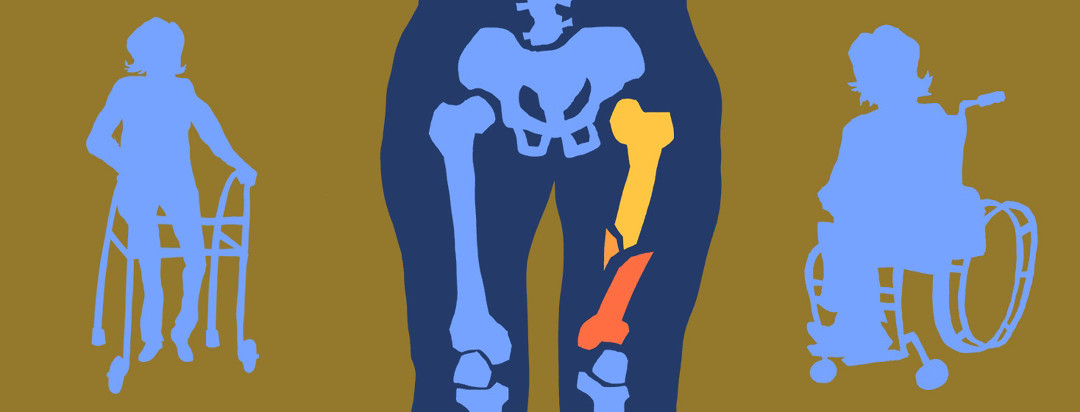Blood Cancer Broke My Leg (Part 1)
In our 3rd Annual Blood Cancer in America Survey, over half of those surveyed reported experiencing symptoms that led to their blood cancer diagnosis, including a broken bone. My journey with multiple myeloma began with a dull pain in my left hip. I could still walk and bike on it and even run several miles. I limped a little at times, but I figured my hip was just wearing out from running too many 10Ks. Or maybe the lack of stretching my muscles after workouts was finally catching up with me.
One spring morning as I stepped over a gate, my foot got caught, and I fell to the floor in excruciating pain. A CT scan showed I had fractured my hip, and I was sent to an orthopedic surgeon. The surgeon thought my amount of pain didn’t match the small fracture on the CT scan and ordered an MRI.
The results of the MRI quickly ended all hopes of minor wear and tear from long-distance running. It showed a 9-cm area in my femur that lit up like a Christmas tree. I was horrified; I didn’t want to look, but I couldn’t look away either.
They hoped the bone would heal itself
I was sent to the nearest university hospital for treatment and diagnosis. The first doctor I saw there was an orthopedic surgeon who quickly scheduled a bone biopsy. During the biopsy, he also planned to stabilize my hip by inserting a small pin or screw through my upper femur. Unfortunately, I lost so much blood during the procedure that he had to stop the surgery and postpone the repair.
The biopsy showed that the area in my femur was indeed a plasmacytoma (plasma cell tumor) that had weakened the bone enough to cause the fracture. And a bone marrow biopsy a week later confirmed that the cancer had spread to my bone marrow. Even so, the surgeon was confident that chemotherapy and radiation would help the fragile bone eventually heal itself. If it didn't, they would do surgery after my stem cell transplant.
I spent months in a wheelchair
I spent the next couple of months in a wheelchair, waiting for the fracture to heal and the pain to subside. The radiation relieved the pain enough to be able to use a walker at times, but I was still unsteady on my feet. I was also at a high risk of falling. Memories of the acute, searing pain from the first fall triggered spontaneous episodes of anxiety which left me feeling weak and dizzy when standing upright. I felt the safest in the chair.
Nevertheless, I knew I needed exercise and was able to manage half-mile walks with the walker most days. On a few days, I even managed to walk with my caregiver to the cancer clinic for infusions. As time went on, I was able to put a little weight on my left leg and was hopeful that the doctor was right and the bone was improving.
The doctors changed the original plan
During the summer, though, the relief of pain from the radiation was wearing off. I had also switched my care to a specialist at a different hospital. My team there was concerned that if I fell during my transplant, there would be nothing they could do; my immune system would be too weak to tolerate surgery. They decided it was too risky to wait.
So they changed the plan, pushed back the date of my transplant, and prepared for surgery instead. This time they would be placing a titanium rod down the length of my femur. It would not be an easy surgery, but I had spent four months not being able to take a single step on my own. I was excited to be able to walk again.

Join the conversation